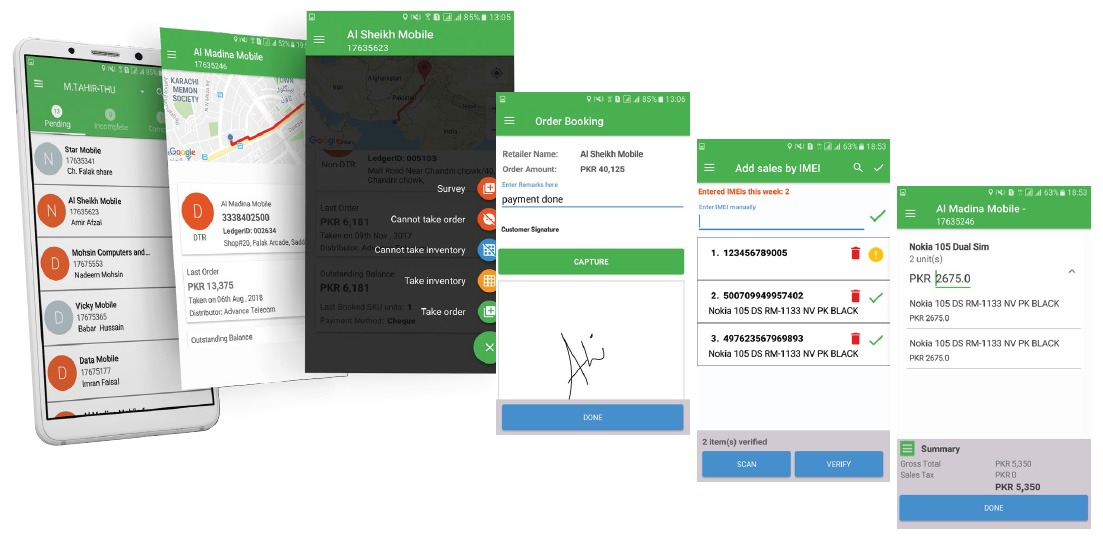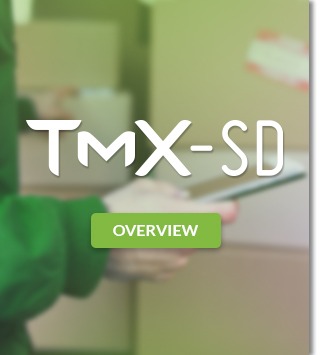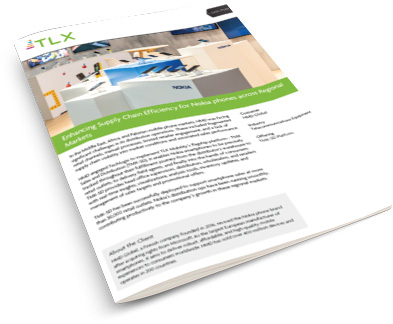
HMD Global, a Finnish company founded in 2016, revived the Nokia phone brand after acquiring rights from Microsoft. As the largest European manufacturer of smartphones, it aims to deliver robust, affordable, and high-quality mobile experiences to consumers worldwide. HMD has sold over 400 million devices and operates in 200 countries.
The Challenge: Operational Blind Spots
Nokia’s sales and distribution operations in many regional markets suffered from a range of significant challenges:
- Manual Form Errors: Sales tracking and data collection processes were outdated and relied heavily on paper-based forms. Field agents frequently made errors while manually recording sales and deliveries, leading to data inconsistencies.
- Cancellations and Returns: Lack of real-time visibility into retailer inventories during order booking led to frequent equipment returns to distributor warehouses significantly impacting sales success.
- Delayed Order Tracking: Field agents were required to return to the head office and wait in long queues to process orders collected throughout the day. Information from the field was typically consolidated a day later and manually entered into the distribution management system, causing significant delays in order fulfillment.
- Fragmented Retail Channels: Thousands of small, unregistered, and non-digitized retailers operated independently outside of formal distribution networks, making it difficult to ensure consistent brand presence and control across markets.
- Lack of Direct Retailer Engagement: There was no structured mechanism to promote offers, validate transactions, or track incentive payments in real time. This limited the effectiveness of trade promotions and loyalty programs.
- Limited Market Visibility: HMD lacked real-time insights into stock levels, point-of-sale (POS) activities, and on-ground market conditions. As a result, promotional activities and sales strategies could not be optimized for local market dynamics.
The Solution: End-to-End Real-time Insights
The deployment of TMX-SD digitally transformed HMD’s sales and distribution operations in regional markets – streamlining workflows, boosting field productivity, and enabling real-time visibility across the mobile phone retail ecosystem.
- Verified Retailer Base: The Champion App enabled field surveyors to geo-tag and profile retail outlets, building an up to date, verified database and filtering out fraudulent or inactive retailers.
- Field Force Digitization: Sales promoters and surveyors were digitally empowered through app-based tools with real-time geo-tracking and performance monitoring.
- Retail Promotions and Rewards: The Promoter App captured retail-level sales, validated transactions via IMEI and customer ID, and supported direct communication of sales targets and incentives.
- Retailer Empowerment: A self-service Retailer Web Portal allowed retailers to monitor sales, track promoter performance, and manage orders independently.
- Buy Now, Pay Later (BNPL) Integration: digital workflows for onboarding, credit screening, payment planning, and collections. Key features included:
- Instant credit profiling and KYC using National ID repository and credit scoring services
- Eligibility checks and flexible payment plan selection
- A self-service consumer app with mobile wallet integration
- Multi-factor authentication and device locking for credit protection
- Real-Time Sales & Mobile Event Management: IMEI-level tracking ensured end-to-end transaction traceability. HMD gained complete visibility across sales, promoter performance, outlets, and regions.
- High Availability: TMX-SD is a cloud-native Software as a Service (SaaS) solution deployed at Microsoft Azure Cloud, ensuring 99.99% uptime and rigorous compliance with international data and application security standards.
The complete order tracking cycle for Field Agents

Key Benefits: Data-Driven Retail Transformation
TMX-SD now supports smartphone sales across 30,000+ retail outlets, driving Nokia’s growth in regional markets by digitizing its distribution and sales ecosystem.
- Foundation for Innovation: TMX-SD enabled advanced capabilities like BNPL, loyalty rewards, digital financing, and performance benchmarking. It unified promoters, retailers, distributors, and brand teams under one digital platform.
- Insights-Driven Decision: Real-time dashboards and analytics empowered all stakeholders with insights such as:
- Retailer conversion rates
- Geo-performance heat maps
- Sales vs. payments cost analysis
- Promoter productivity comparisons
- Efficiency Gains: Sales recording time reduced by 75%; reporting became 5× faster.
- Higher Productivity: With 85% operational visibility, order execution improved by 40%, data duplication dropped 90%, and field productivity rose 55%.
- Sales Controls: Agent accountability increased by 60%, while GPS access helped reduce route deviations by 40%.
- Billing & Recovery: Billing cycles became 40% faster, and payment recovery engagement rose 30%.
- Full Compliance: Achieved 100% regulatory compliance.


